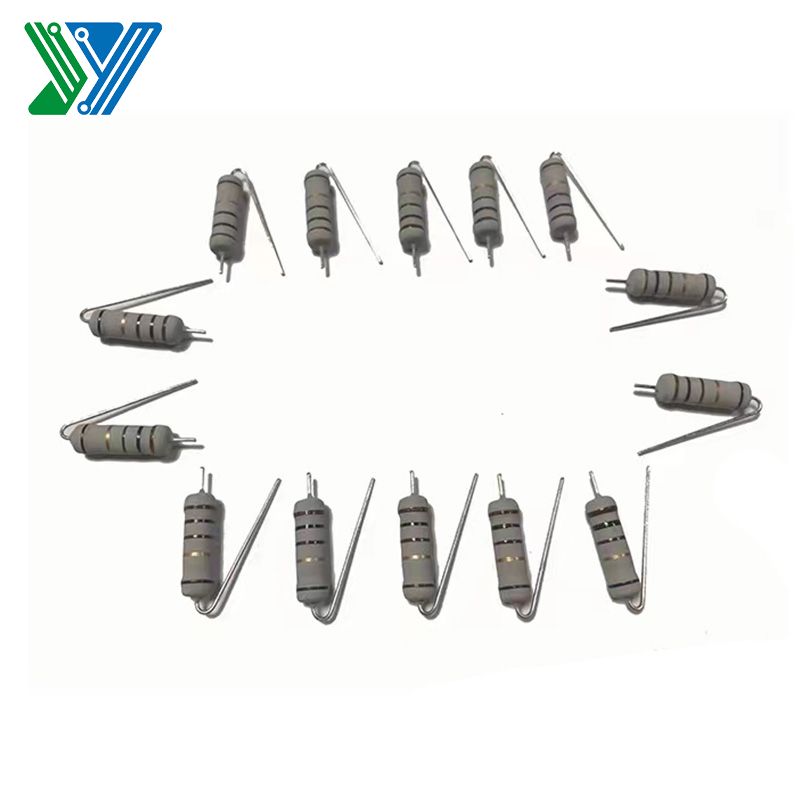Jun. 05, 2023
Electronic Components & Supplies
Wire wound resistors are electronic components that play a crucial role in controlling the flow of electric current in a circuit. They are widely used in various applications, ranging from consumer electronics to industrial equipment. In this comprehensive guide, we will delve into the fundamentals of wire wound resistors, including their construction, working principle, advantages, and common applications.

Wire wound resistors are made by winding a resistive wire around a non-conductive core. The resistive wire is typically made of materials such as nichrome or a nickel-chromium alloy. The wire is wound in a precise pattern to achieve the desired resistance value. The entire winding is then protected by a coating or encapsulated in a ceramic or vitreous enamel casing for insulation and durability.
The working principle of wire wound resistors is based on the relationship between the length, cross-sectional area, and resistivity of the wire. When an electric current passes through the wire wound resistor, the resistive wire offers resistance to the flow of electrons, resulting in the conversion of electrical energy into heat. This heat dissipation property is crucial in high-power applications as it helps prevent damage to other components in the circuit.
Wirewound fuse resistors offer several advantages that make them suitable for various applications:
a. High Precision: Wire wound resistors provide excellent precision and accuracy in resistance values. They are capable of achieving tight tolerance levels, making them ideal for applications that require precise resistance values.
b. High Power Handling Capacity: Wire wound resistors are designed to handle high power levels. Their construction allows for efficient dissipation of heat, enabling them to withstand high current and power loads without significant degradation.
c. Stability and Reliability: Wire wound resistors exhibit high stability over a wide range of operating conditions. They have low temperature coefficients of resistance, meaning their resistance remains relatively constant with temperature changes. This ensures reliable and consistent performance in various environments.
d. Low Noise and Distortion: Wire wound resistors have low noise and low distortion characteristics, making them suitable for applications that require minimal interference or signal distortion, such as in audio equipment or measurement circuits.
Wirewound resistors find extensive use in various industries and applications:
a. Power Electronics: Wire wound resistors are commonly used in power electronics, including power supplies, motor drives, inverters, and industrial equipment. Their high power handling capability and reliability make them ideal for controlling current flow and dissipating heat in high-power applications.
b. Electrical Testing and Measurement: Wire wound resistors are employed in precision measurement equipment, calibration devices, and electrical testing circuits. Their high accuracy and stability ensure precise measurement and calibration results.
c. Load Banks: Wire wound resistors are utilized in load banks for testing electrical power sources, such as generators or batteries. They provide a resistive load that simulates the actual load conditions to verify the performance and capacity of the power source.
d. High-Frequency Applications: Wire wound resistors with low inductance and low capacitance properties are used in high-frequency circuits, such as radio frequency (RF) applications or telecommunications equipment, to maintain signal integrity and minimize interference.
e. Industrial and Automotive Electronics: Wire wound resistors are found in various industrial and automotive electronic systems, including motor control units, braking systems, heating elements, and lighting circuits. They contribute to reliable operation, accurate control, and safe functioning of these systems.
Previous: The Versatile Eye Bolt: A Practical Solution for Various Applications
Next: Are Radial Leaded Capacitors Still Relevant in Modern Electronics?
If you are interested in sending in a Guest Blogger Submission,welcome to write for us!
All Comments ( 0 )